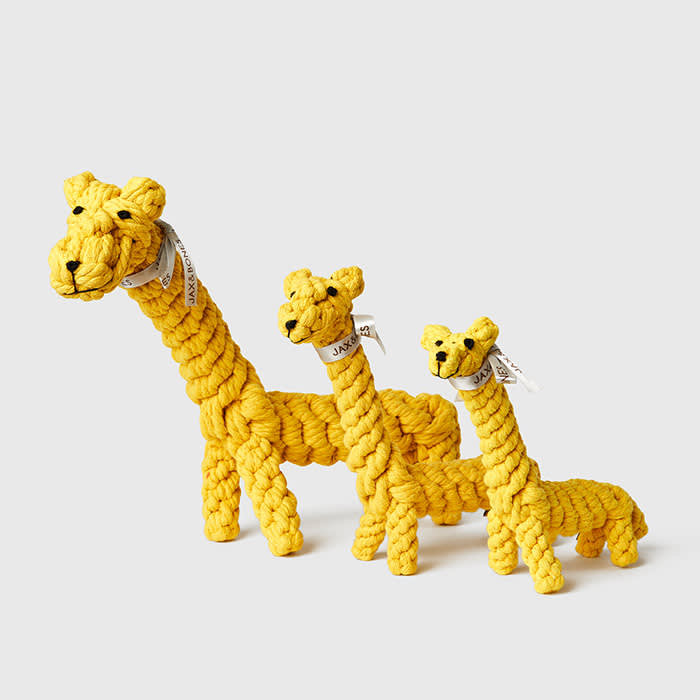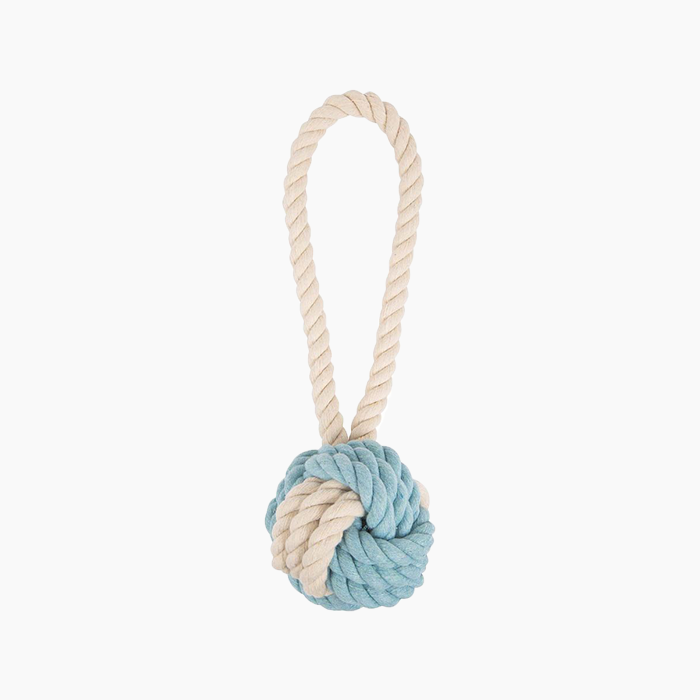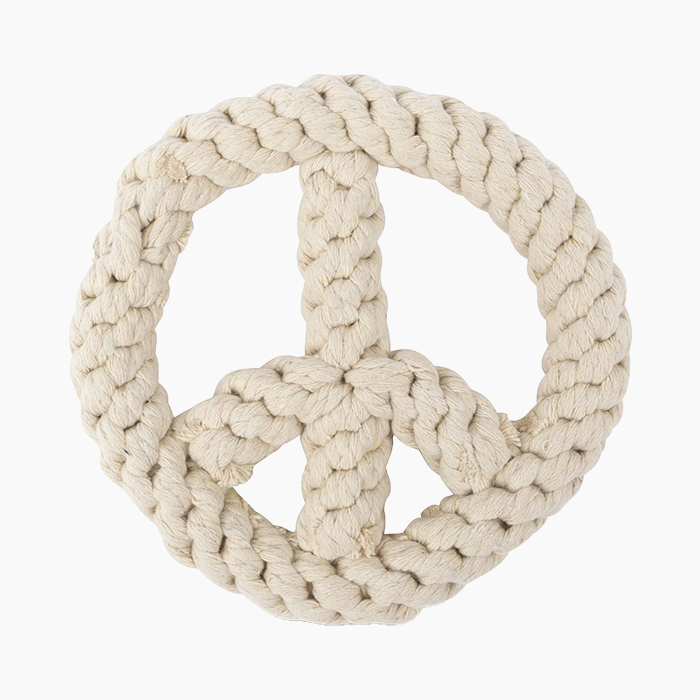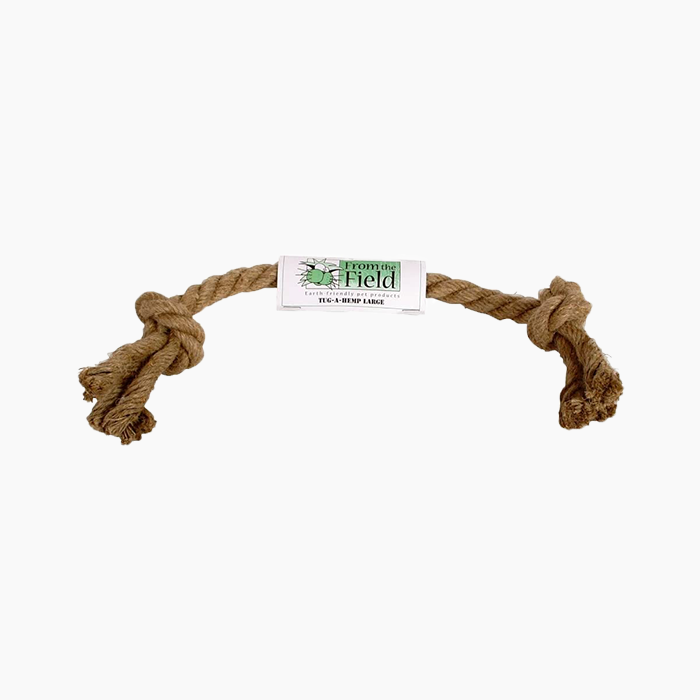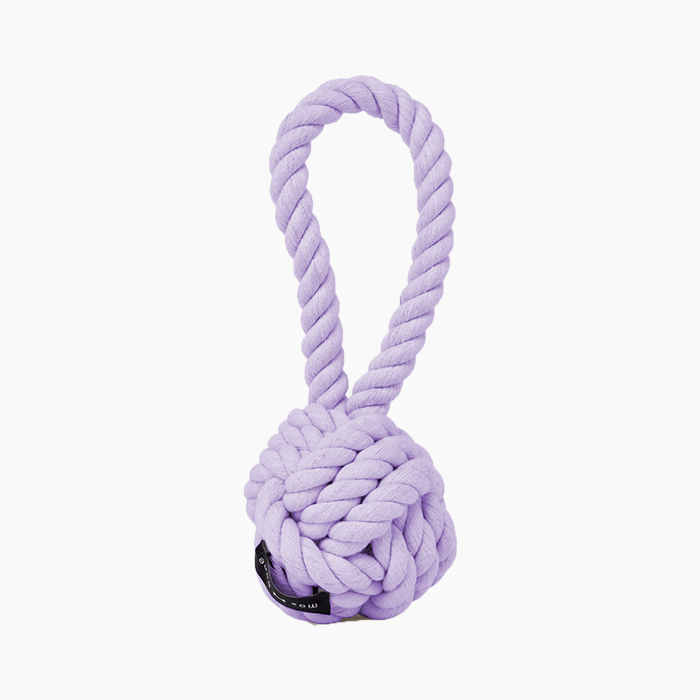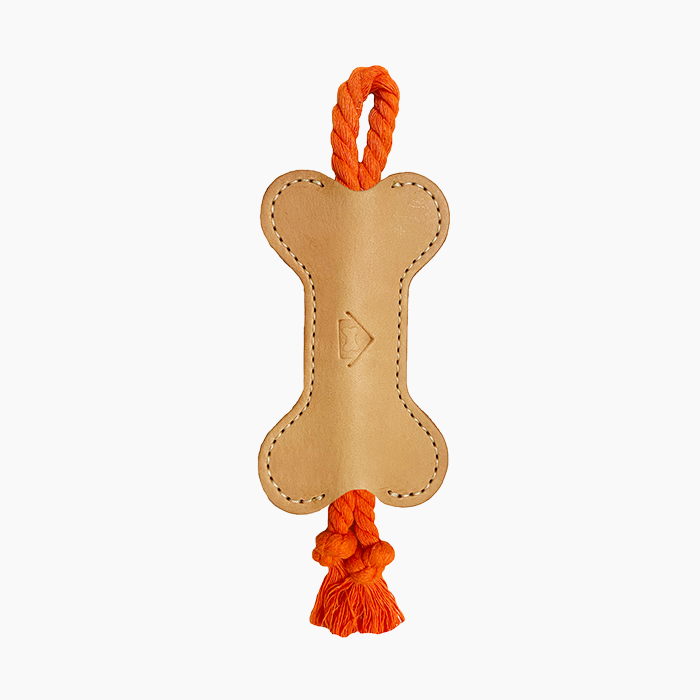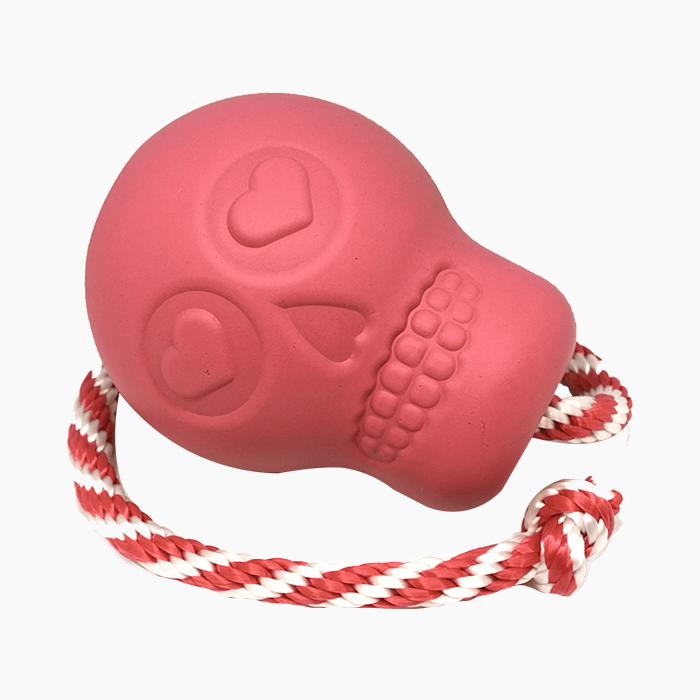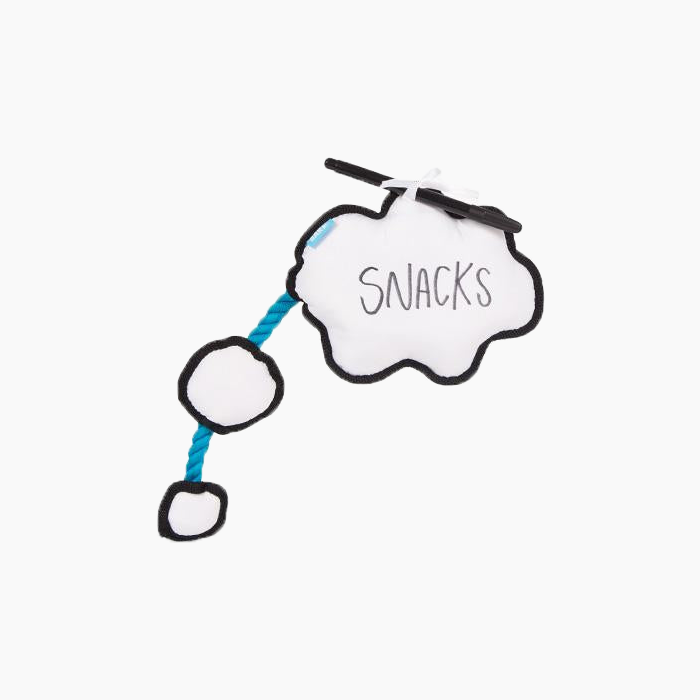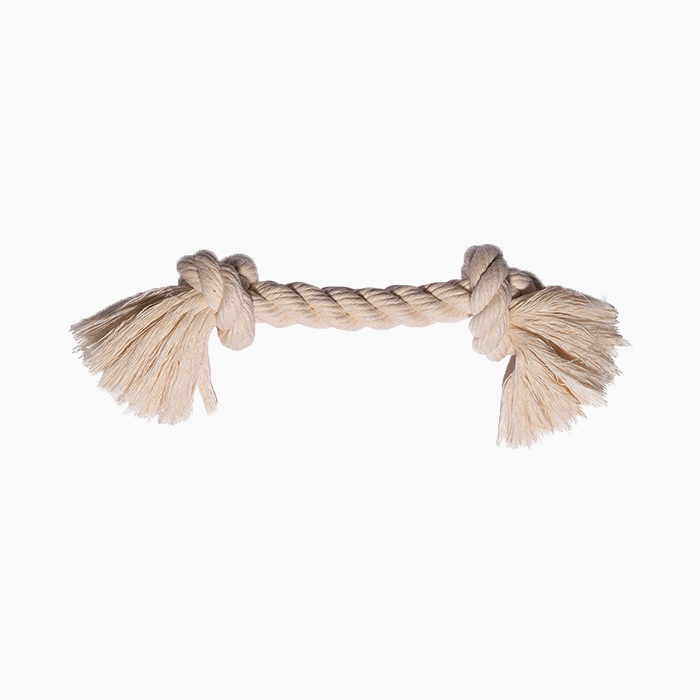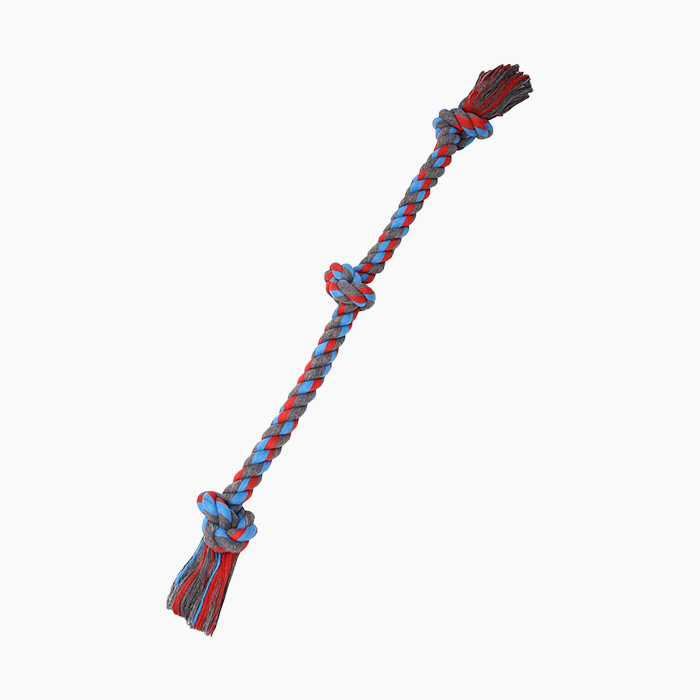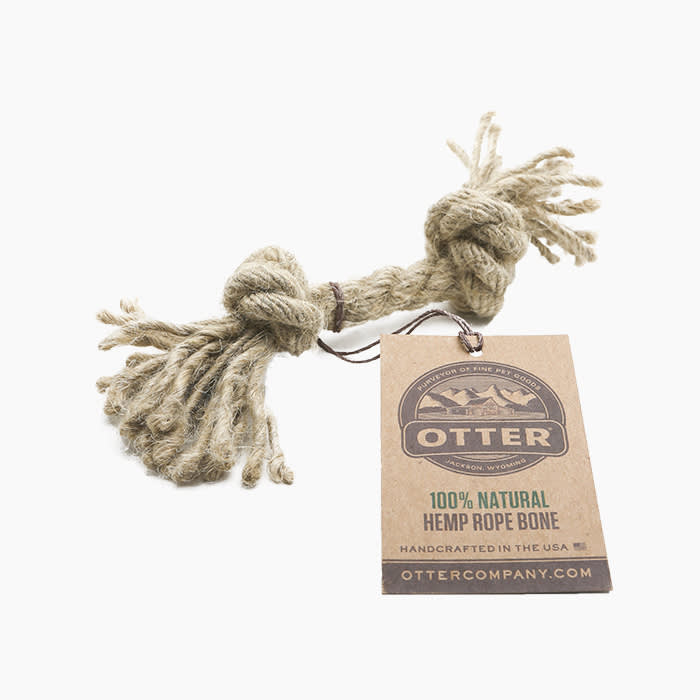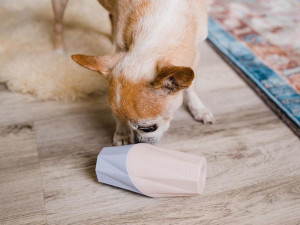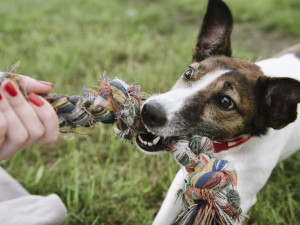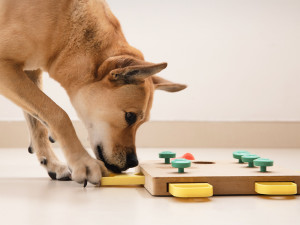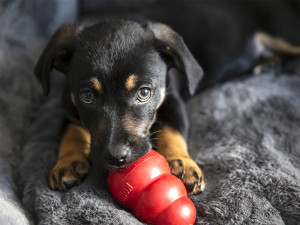12 Rope Toys Fit For Playful Pups
Two vets on the pros and cons of these canine classics.
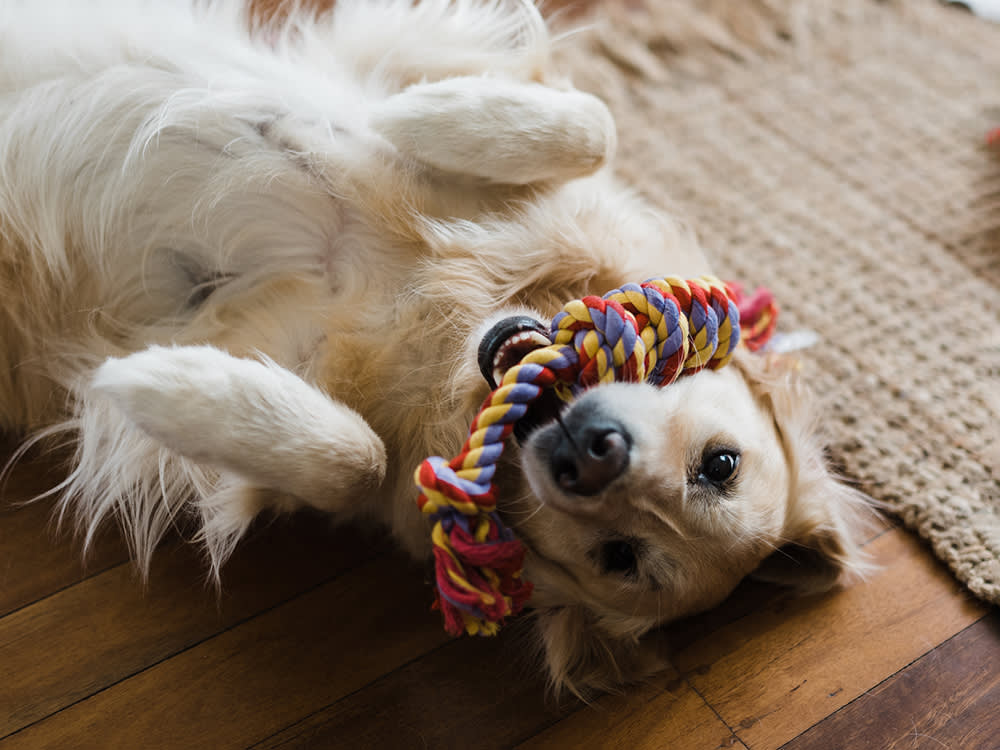
share article
There are few toys more synonymous with dogs than rope toys. If tennis balls and bones are the LeBron James and Dwyane Wade of doggy playthings, then tied ropes are the Chris Bosh rounding out our Big Three of classic toys. However, just like CB4 himself, rope toys might get less attention than the other two, but they’re far more useful than many people realize — albeit if occasionally misunderstood. Of course, when it comes to any uncertainty regarding our pets, it’s best to ask the experts.
“Rope toys are classic toys with multiple functions — they can be used for tug of war, chewing, hide and seek, and as training tools. They can be just a simple rope with a knot or two or more elaborate designs that include plastic or fabric additions,” says veterinary nutritionist Dr. Emily Luisana. It’s this simplicity that generates the tool’s vast versatility, adds veterinary behaviorist Dr. Valli Parthasarathy. “Dogs can chew on them, toss them around, play with other dogs with them, or play tug with their people with them. They can provide mental stimulation and help tire out active pooches,” she says.
Beyond the wide-reaching styles of play and stimulation, rope toys are great for dental health by massaging gums and removing any lingering food stuck within teeth. This will also minimize the chances of harmful bacteria or plaque forming on a dog’s choppers. Speaking of munching, rope toys can be some of the most durable options available — perfect for aggressive chewersopens in a new tab. That being said, not unlike when you start dating someone new or see Chris Bosh at the three-point line, it’s important to remember nobody’s perfect.
As Dr. Luisana puts it, “The complication is that any toy that is fun enough to play with often carries a bit of risk.” In this case, if a dog is able to destroy parts of the rope, it can have some serious repercussions, including chokingopens in a new tab and intestinal damage. “Unfortunately, if a dog bites off a bit of the rope they won’t be able to digest it. That can lead to a blockage, or obstruction, of the intestine…Both of these conditions are life-threatening and need immediate surgical intervention,” Dr. Parthasarathy explains.
Both vets strongly recommend monitoring dogs when playing with rope toys, especially if they have never tried one before or if the toy is new. “I recommend putting them out of reach when you are not monitoring them. If your dog is a heavy chewer and is likely to destroy it, consider using it exclusively for interactive play rather than chewing,” Dr. Luisana suggests.
Given these caveats, if you want to see how your pup might enjoy or handle a modern rope toy — we’ve got you covered. Below are 12 of the better options on the market today.
Btw, our editors (and their pets) picked out these products. They’re always in stock at the time we publish, but there’s a chance they’ll sell out. If you do buy through our links, we may earn a commission. (We’ve got a lot of toys to buy over here, you know?)

Sean Zucker
Sean Zucker is a writer whose work has been featured in Points In Case, The Daily Drunk, Posty, and WellWell. He has an adopted Pit Bull named Banshee whose work has been featured on the kitchen floor and whose behavioral issues rival his own.
Related articles
![]() opens in a new tab
opens in a new tabThis Pastel Toy Belongs in a Taylor Swift Music Video
Once your dog gets ahold of this gorgeous toy, they’re gonna “need to calm down” for sure.
![A dog tugging on a toy outside]() opens in a new tab
opens in a new tabThe Definitive Guide to Choosing Safe Dog Toys
Tips for pet parents who want their pups to have safe fun.
![Dog looking for treats in an interactive dog puzzle toy]() opens in a new tab
opens in a new tab18 Best Interactive Dog Puzzle Toys
Let the games begin.
![Puppy playing with KONG toy]() opens in a new tab
opens in a new tabCult Dog Products All New Pet Parents Need
Technically, you can live without this stuff, but we don’t recommend it.
![A collage of pet produces on a beach.]() opens in a new tab
opens in a new tab42 Deals That Will Have Your Pet Stoked for Memorial Day 2024
Wild One, Little Beast, Maxbone, and more should be on your holiday shopping list this year.
